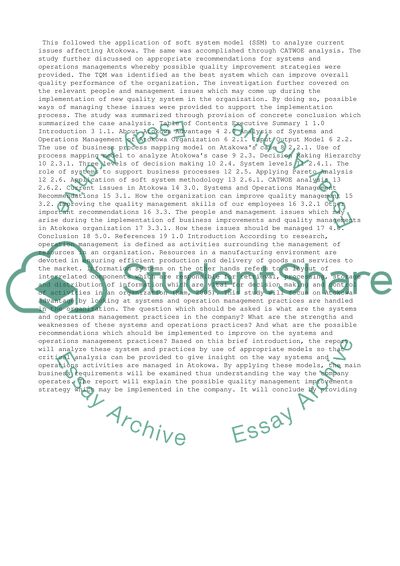Cite this document
(“Atokowa Organization Report Case Study Example | Topics and Well Written Essays - 3000 words”, n.d.)
Retrieved from https://studentshare.org/business/1448387-systems-and-operations-management-practices-at
Retrieved from https://studentshare.org/business/1448387-systems-and-operations-management-practices-at
(Atokowa Organization Report Case Study Example | Topics and Well Written Essays - 3000 Words)
https://studentshare.org/business/1448387-systems-and-operations-management-practices-at.
https://studentshare.org/business/1448387-systems-and-operations-management-practices-at.
“Atokowa Organization Report Case Study Example | Topics and Well Written Essays - 3000 Words”, n.d. https://studentshare.org/business/1448387-systems-and-operations-management-practices-at.


